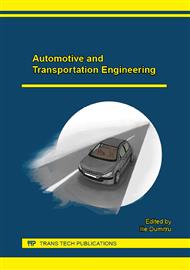[1]
Antonio Armillotta, A method for computer-aided specification of geometric tolerances, Computer-Aided Design 45 (2013) p.1604–1616.
DOI: 10.1016/j.cad.2013.08.007
Google Scholar
[2]
Anselmetti, B., Chavanne, R., Yang, J-X., Anwer, N., Quick GPS: A new CAT system for single-part tolerancing, Computer-Aided Design, 42 (2010), 768-780.
DOI: 10.1016/j.cad.2010.04.006
Google Scholar
[3]
Yi Zhang, Zongbin Li, Jianmin Gao, Jun Hong, New reasoning algorithm for assembly tolerance specifications and corresponding tolerance zone types, Computer-Aided Design 43 (2011), p.1606–1628.
DOI: 10.1016/j.cad.2011.06.008
Google Scholar
[4]
Schleich B., Anwer N., Zhu Z., Qiao L., Mathieu L., Wartzack S., A Comparative Study on Tolerance Analysis Approaches. International Symposium on Robust Design–ISoRD14, Aug. 2014, Copenhagen, Denmark. >hal-01094270>.
Google Scholar
[5]
George Kaisarlis, Christofer Provatidis, CAD-Based dimensional and geometrical tolerancing implementation by the use of virtual gages: A Case study, Machine Design, Vol. 3 (2011) No. 3, ISSN 1821-1259 pp.205-210.
Google Scholar
[6]
A. K. Sahania, Pramod Kumar Jain, Satish C. Sharma, Tolerance Stack Up Analysis for Angularity of Components and their Assembly, 24th DAAAM International Symposium on Intelligent Manufacturing and Automation, 2013, in Procedia Engineering 69 ( 2014 ) p.952.
DOI: 10.1016/j.proeng.2014.03.075
Google Scholar
[7]
Hua Chen, Sun Jin, Zhimin Li, Xinmin Lai, A comprehensive study of three dimensional tolerance analysis methods, Computer-Aided Design 53 (2014), p.1–13.
DOI: 10.1016/j.cad.2014.02.014
Google Scholar
[8]
Balanoiu A., Study regarding the tolerances applied to assembly, using computer aided design, Master Thesis, (2014).
Google Scholar
[9]
** Standards SR- ISO 1101/1983, 5458/1998, 5459/1981, and 8015/(1985).
Google Scholar


